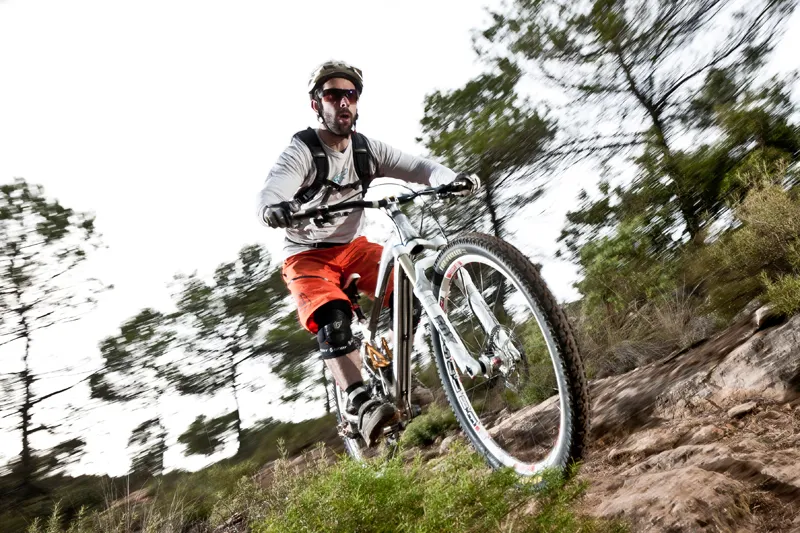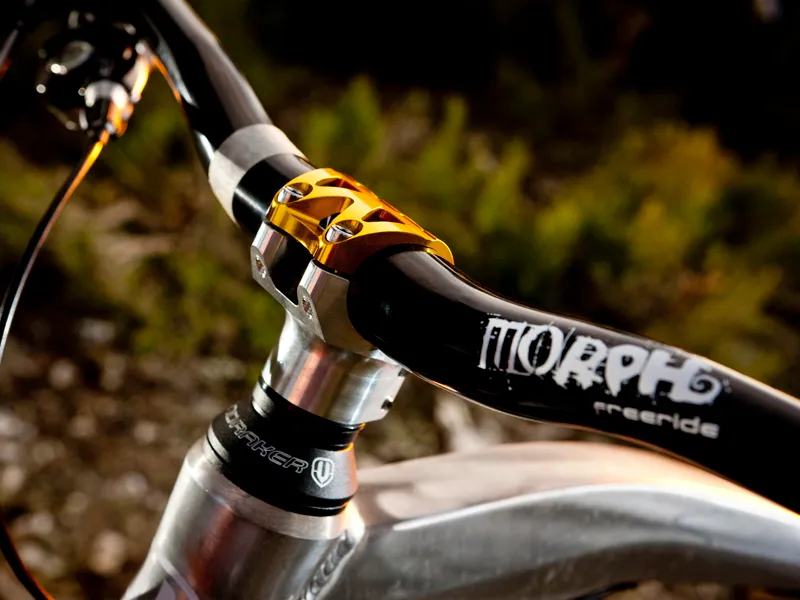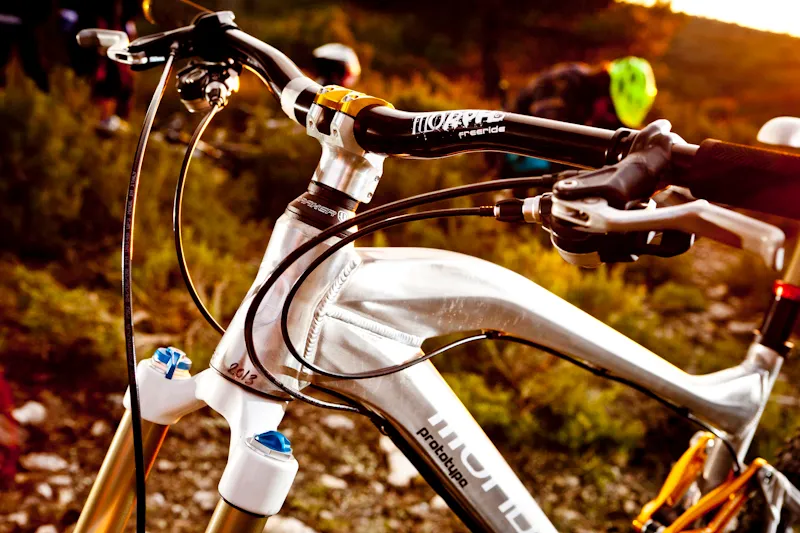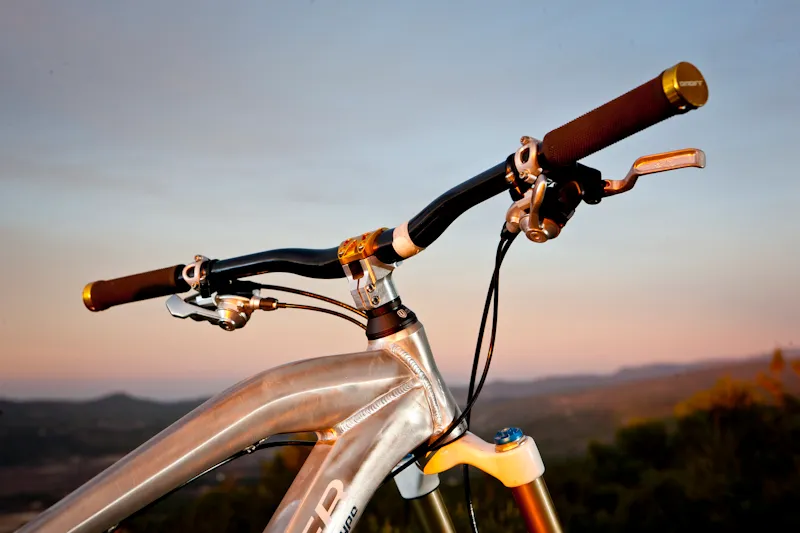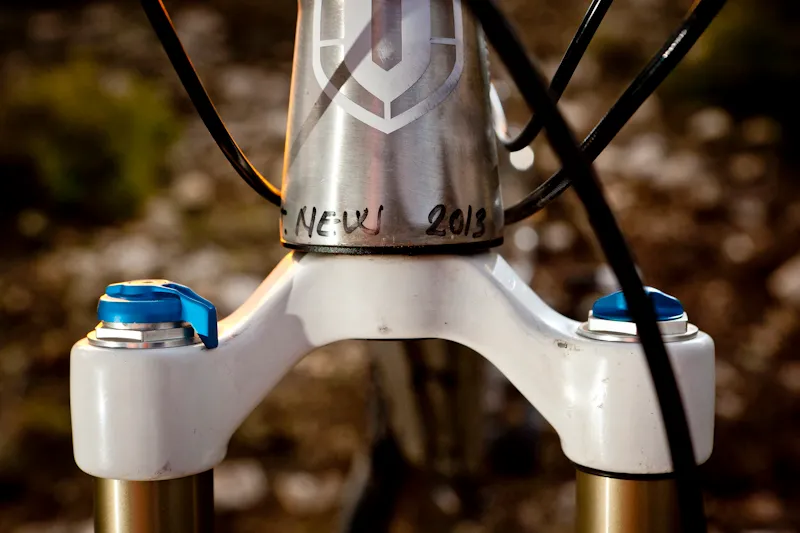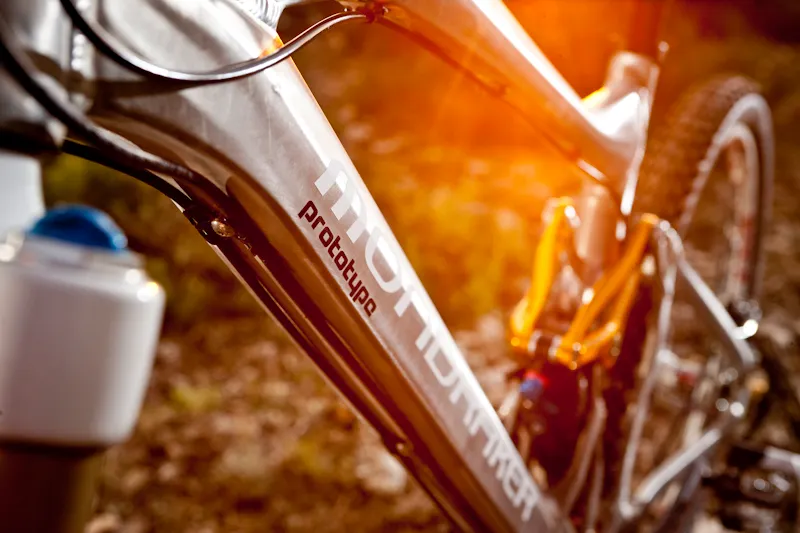Mondraker are planning on making some radical changes to key bikes in their line-up for 2013. We managed to get the full exclusive on this new development during a trip to Alicante, Spain to test ride key current models.
Evolution or revolution?
Over the past few years, trail bikes have evolved. Frames have become slacker and longer, and 700mm handlebars and stubby 60-70mm stems are now commonplace. These changes have enhanced stability, control and descending prowess, with the extra length in the top tube still allowing riders to get that all-important stretch when climbing.
For 2013, Mondraker look set to take things to the next level with a seemingly radical yet actually extremely logical change. It's the brainchild of Cesar Rojo, the man behind the Zero Suspension platform, and brand manager Miguel Pina.
The pair set out to deliver a design that offers "more stability, more reactivity and more confidence” and combines the best features of all-mountain, gravity enduro and downhill bikes. So how were they going to achieve this? Cesar took things right back to basics, looking at motocross, BMX and downhill bikes and knew he needed to change the way in which the bike was piloted.
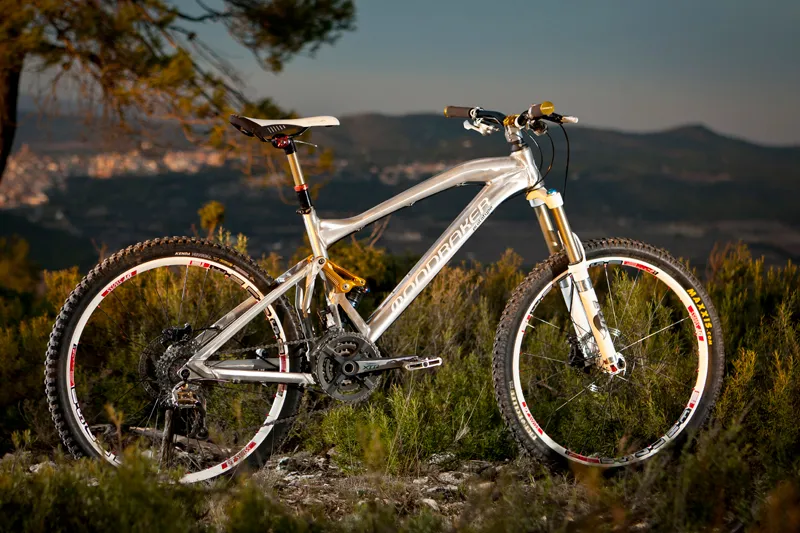
Short, sharp shock
Motorbikes use the shortest stems available to enhance control. In recent years downhill race bikes have followed suit, with minimal-length, zero-rise stems now the norm. So why not apply this idea to other categories of mountain bike, and alter the frame to suit? Well that’s exactly what Mondraker have done with the advent of their 'centre stem'.
In order to make the super-short stem work without throwing a mid-travel bike's handling characteristics out the window – unlike downhill bikes, they need to be pedalled uphill, after all – Rojo needed to make changes to the front triangle of the frame, in particular the relationship between the bottom bracket and front axle, or 'front centre' as it’s known.
The 140mm-travel (5.5in) Foxy normally comes with a 70mm stem. In Alicante, we were shown a prototype model with a 10mm stem sitting proudly in place. With the stem now effectively 60mm shorter, Mondraker have added 60mm to the front centre of the bike but the rest of the geometry remains the same. The stem is taller than usual to compensate for the rise of a standard stem; this may change as development continues.
This bike will sit alongside the standard models in the 2013 line-up – the Foxy, Foxy R and Foxy RR, all of which will still come with 70mm stems – and will be called the Foxy XR. Although the 'centre stem' looks like quite a radical move, it makes a lot of sense. Reactivity through the bars should be increased, as should stability thanks to the longer wheelbase.
The concept will be extended to one bike in each of Mondraker's mid- to long-travel ranges – Foxy, Dune and Summum – for 2012. The Dune XR and Foxy XR will both be equipped with adjustable-travel Fox TALAS forks so the rider can lower the front end for improved control and grip on flat or uphill trails. It's good to see a company thinking about bikes as a cohesive package rather than just a collection of parts.
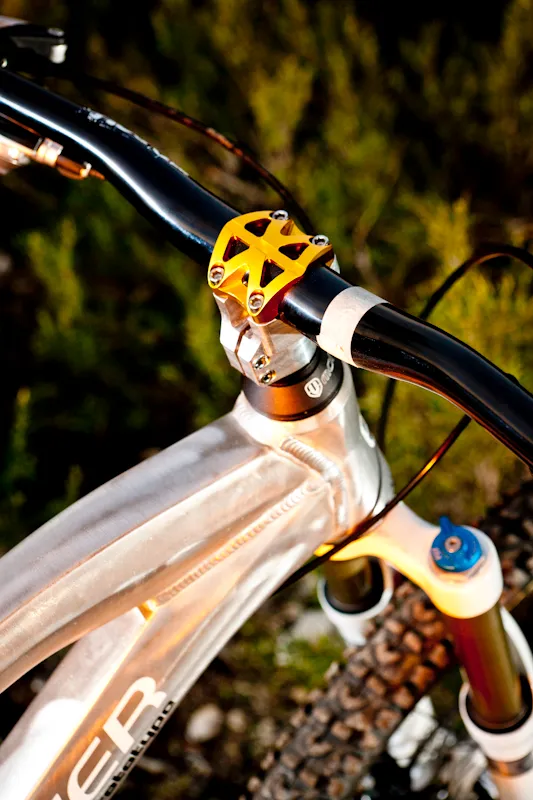
So, how does it ride?
We were lucky enough to get hold of the prototype Foxy XR for a few hours and take it for a spin in La Fenasosa bike park, which is littered with some of the roughest trails we’ve ridden. Look down at the stem and you’ll certainly do a double take, but on the trail acclimatising to the new feel that the longer front centre and stumpy 10mm stem produces doesn’t take long at all.
Over some of the roughest rock sections the improved stability was clearly apparent, letting us hammer into sections with more confidence, and it was hard to believe we were only aboard a 140mm (5.5in) trail bike. It was hitting the turns where we were really impressed though. Initially we were concerned about how the bike would handle in the tighter corners, but the enhanced reactivity through the bars and improved riding position meant carving through the turns was a controlled affair.
On rougher climbs you can feel the extra twitch through the bars caused by the super-short stem but this should be remedied with use of the TALAS fork, which this prototype didn’t have. We’re keen to give different stem heights a go too, just to see how bar height affects the feel of the bike. Bear in mind that this machine is still in its prototype phase and we’re sure Cesar will be playing around with the concept extensively before release in 2013.
We can’t wait to see this design roll out across the Foxy, Dune and Summum line-ups and we’re impressed to see such an innovative and ballsy move by the small Spanish company. Roll on 2013!
